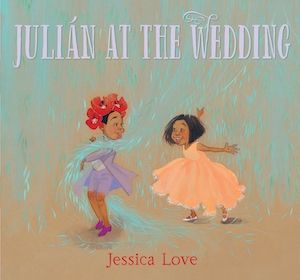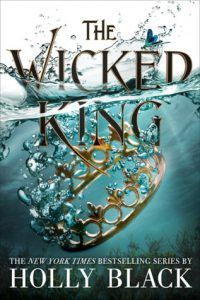Julián and his abuela are going to a wedding. Better yet, Julián is in the wedding. Weddings have flowers and kissing and dancing and cake. And this wedding also has a new friend named Marisol. It’s not long before Julián and Marisol set off for some magic and mischief of their own, and when things take an unexpected turn, the pair learns that everything is easier with a good friend by your side. Jessica Love returns with a joyful story of friendship and individuality in this radiant follow-up to Julián Is a Mermaid.
So, What Does Genrefy Mean?
In a library, genrefication is the process of assigning genres to books with the intent of helping patrons find books of interest. Genrefication has become a hot topic in library conversations, especially as some associate it with abandoning the Dewey Decimal System. However, this does not always have to be the case with genrefication. I believe genrefication works best when tailored to fit the needs of the library’s community. For example, some libraries may choose to genrefy their entire collections, while others may choose only the fiction section. Each library has its own unique needs, and I love that genrefication can look so different across libraries.
My Experience With Genrefication
I first learned how to genrefy in a library as a graduate intern in a middle school during my Master’s of Library and Information Studies (MLIS) program. Genrefying the fiction section became my special project, and I immersed myself in books and their genres. As the project took shape, I found great joy in helping students browse by genre. Having graduated with my MLIS, I now work as high school library secretary. Upon starting the position, I delighted to discover that one of my new job responsibilities included genrefying the fiction section. Like the middle school I interned in, this library also valued genrefication with a focus on the fiction section. Nonfiction remained with Dewey. Whether considering to genrefy your school, public, or home library (yes, I shelf my books at home by genre now), check out my tips below to get started.
How to Genrefy Your Library
1. Decide How In-Depth You’d Like to Go
Before diving into genrefication, decide how far you’d like to go with the process. Ask yourself the following questions:
Will I genrefy only fiction, or include nonfiction?Am I going to just label the books by genre, or catalog them by genre as well?After labeling the books by genre, should I move the books on the shelves into sections by genre, or keep their locations the same?
If you’re unsure which direction you’d like to take with genrefication, do some research about it online. Follett’s guide on Genrefication Best Practices could serve as a helpful resource. However, I’d also suggest reading personal stories from librarians who genrefied their libraries. Libraries often put their own spin on genrefication and reading about what worked or didn’t work for them can help as you plan for your own library.
2. Choose Your Genre Key and How to Label Your Books
Come up with a list of genres you’d like to classify your collection into. Consider the reading interests of your community as you formulate this. If you have diehard Dystopian fans amongst your patrons, you may want to create a Dystopian category separate from Science Fiction. If a majority of your readers gravitate towards suspenseful thrillers, consider making this category distinct from Action/Adventure or Mystery. Your genre key will serve as your guide while genrefying, so choose wisely! Once you have your list of genres, think about how you’ll label each book. During my internship at the middle school library, we assigned each genre a color. With the help of our student library interns, we then placed a clear colored label over the spine label of each fiction book based on genre. We decided to follow the same genrefication system as the high school in the district. That way, once the students went on to the high school, they’d already feel comfortable using it. At the high school library I work at now, the library team created unique call number codes for each genre. Some of these include:
CofA for Coming of AgeGN for Graphic NovelsHIST for Historical FictionMSTY for MysterySCFI for Science Fiction
Once we choose a book’s genre, we add its genre code to both the catalog record and on the book’s spine label. In the catalog, we’ll add the code to the book’s call number and as a subject. For example, right now I’m reading The Wicked King by Holly Black, and its call number and spine label read “FIC FTSY Black.” Though we haven’t shifted the books’ positions on the shelves based on genre, listing the genre in the call number sets us up well to do so if we choose to. Its catalog record includes “Fantasy fiction” as a subject. This allows me to search fantasy fiction in the catalog and browse a list of all the books classified as such.
3. Choosing Genres (The Fun Part!)
Now we get to the fun part: genre selection. I love tasting an excerpt of each book and deliberating over which genre it falls in. Usually I can get a good sense of the book’s genre by one or more of the following methods:
Reading the book’s catalog descriptionSkimming the book’s cover blurbs and Library of Congress Subject Headings (located on a book’s copyright page)Checking out the book’s description and genre suggestions in Titlewave or Goodreads
4. The Nitty Gritty of Book Pulling
At the middle school library, I initially created resource lists in the catalog of each genre by searching genre keywords. My student library interns then pulled the books from the lists, labeled them with genre stickers, and reshelved alphabetically by author. However, quite a few books slipped through the cracks and were missed on these lists. Eventually, I took a cart to the shelves and began methodically genrefying each book missed. At the high school library, we undertook the project cart by cart right from the beginning, moving through the fiction section from A to Z. We’d fill a cart with a section of books and genrefy the books individually in the catalog. Then we’d place a new genre-coded spine label on the book, as well as a genre sticker. Demco has a great selection of genre stickers that we use. After the books receive their labels, we reshelve them alphabetically by author.
5. Shifting Books by Genre (Optional)
Once you’ve finished genrefying, you can opt to group the books by genre on the shelves if you’d like. For those interested, check out this librarian’s experiences. Shifting books by genre on the shelves could make it easier for patrons to browse by a genre of interest. On the other hand, keeping the books alphabetical by author may make them easier to find if you’ve got an author in mind when browsing. This method also keeps books by the same author grouped together. Each option has its own benefits. Consider your library community and choose what you think will work best for them.
6. Promotion!
Once you’ve genrefyed your collection, share with your library community. In the middle school library, we laminated and posted genre keys throughout the fiction shelves and put together genre-themed book displays. We then held BreakoutEdu challenges that involved students navigating the new genre system. In the high school library, we feature signage with our genre key on our new book display case and group these new books by genre. Have fun and get creative with it!
A Final Note
Though genrefying may not be for everyone, I’ve found it to be my cup of tea, and I like that libraries approach it in so many different ways. When a library patron asks me for a book recommendation, one of the first things I ask now are what genres they enjoy. Having a genrefied collection allows me to more easily find good titles to suggest. I do my best to make sure no one feels like 6th grade me did, though I do still enjoy rereading Ella Enchanted from time to time.


